Kayla Watkins, Monitor Report 001, 3 channel video essay
Prudence Anne Amsden, Mapped projection, Folding Chairs and Zipties
This piece is the final result of looking at the relationship of movement with an intimate object.
Mary Koszycki, StEM, triptych video installation
Morgana Sugzdinis
“Walk the path”
Part 1: Answering the question map
There will be a series of different questions guiding each person through the “question map”. Each person with their unique life experience and condition, will be walking a different path.
Part 2: The conclusion
The question map will end at 4 different points, each one a popular metaphor, each metaphor a trait to be interpreted by each person.

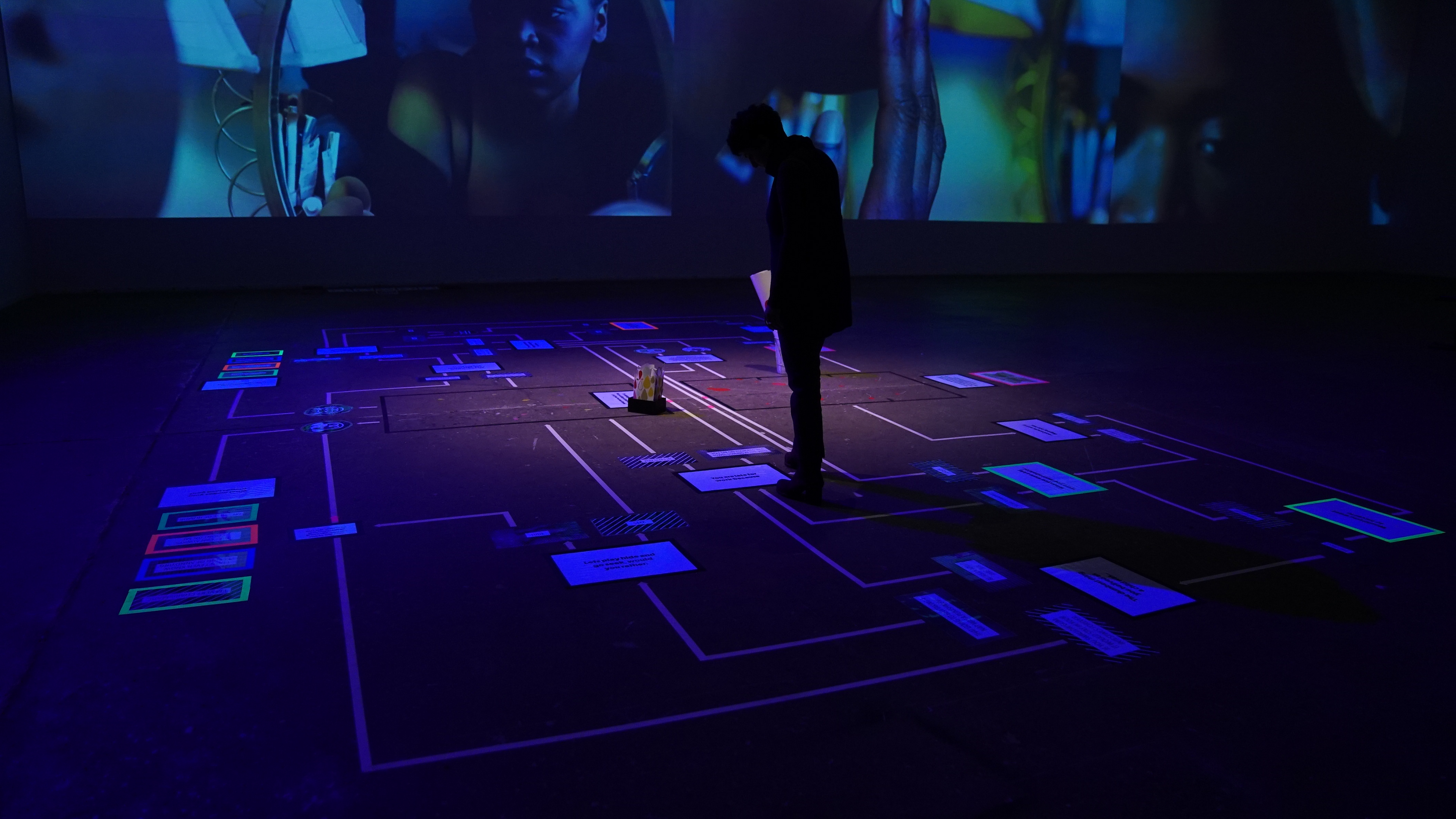
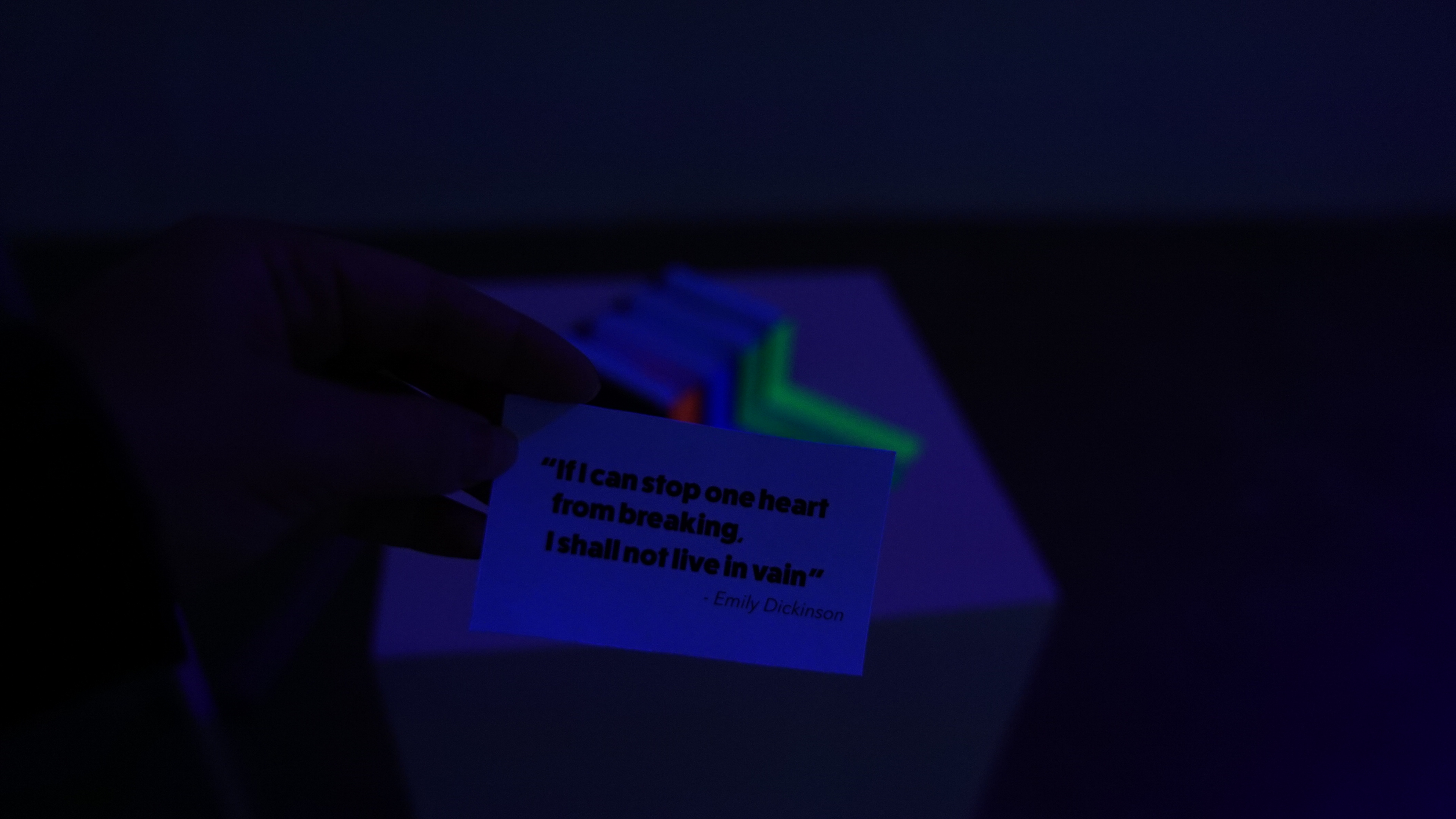
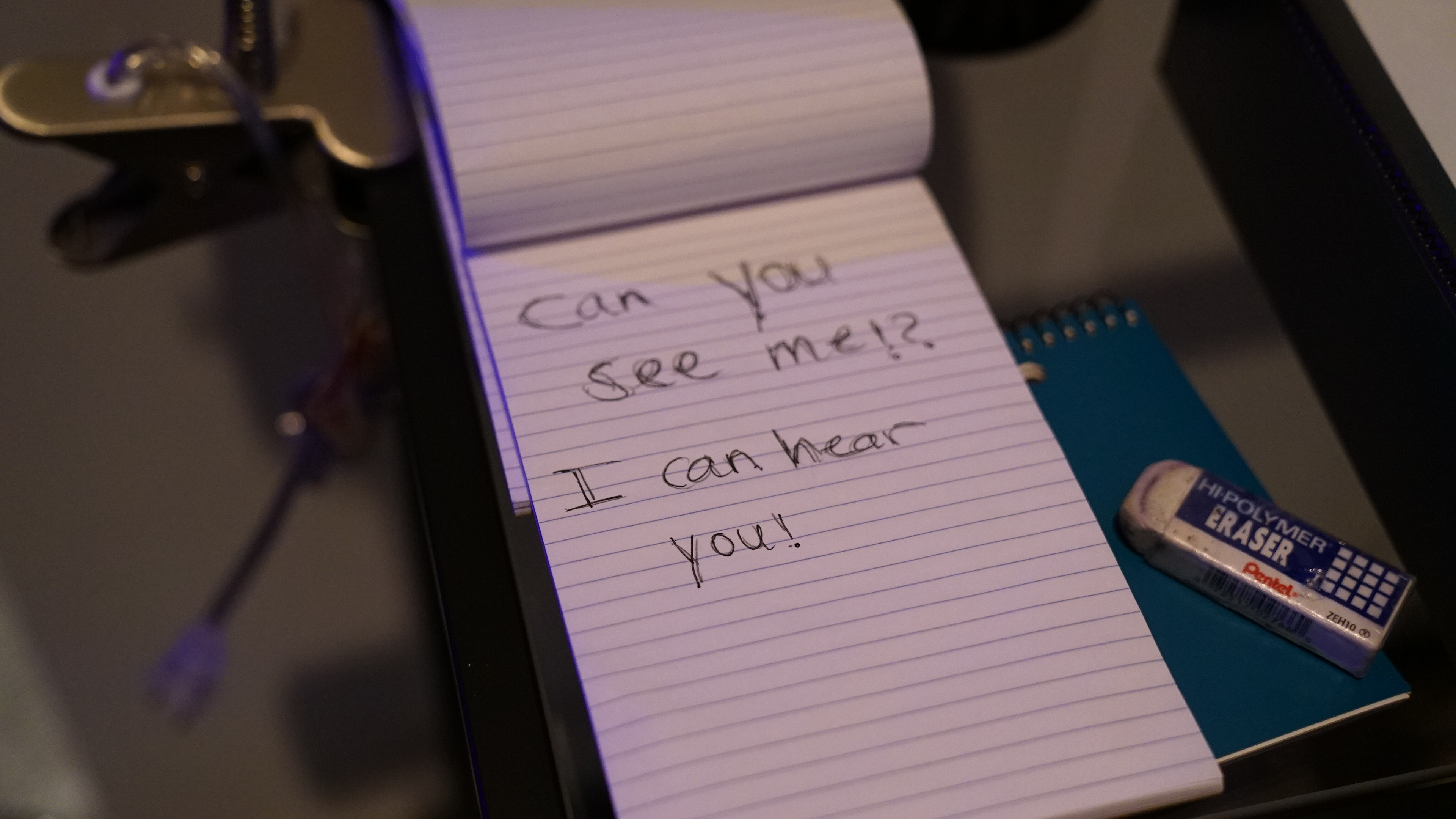
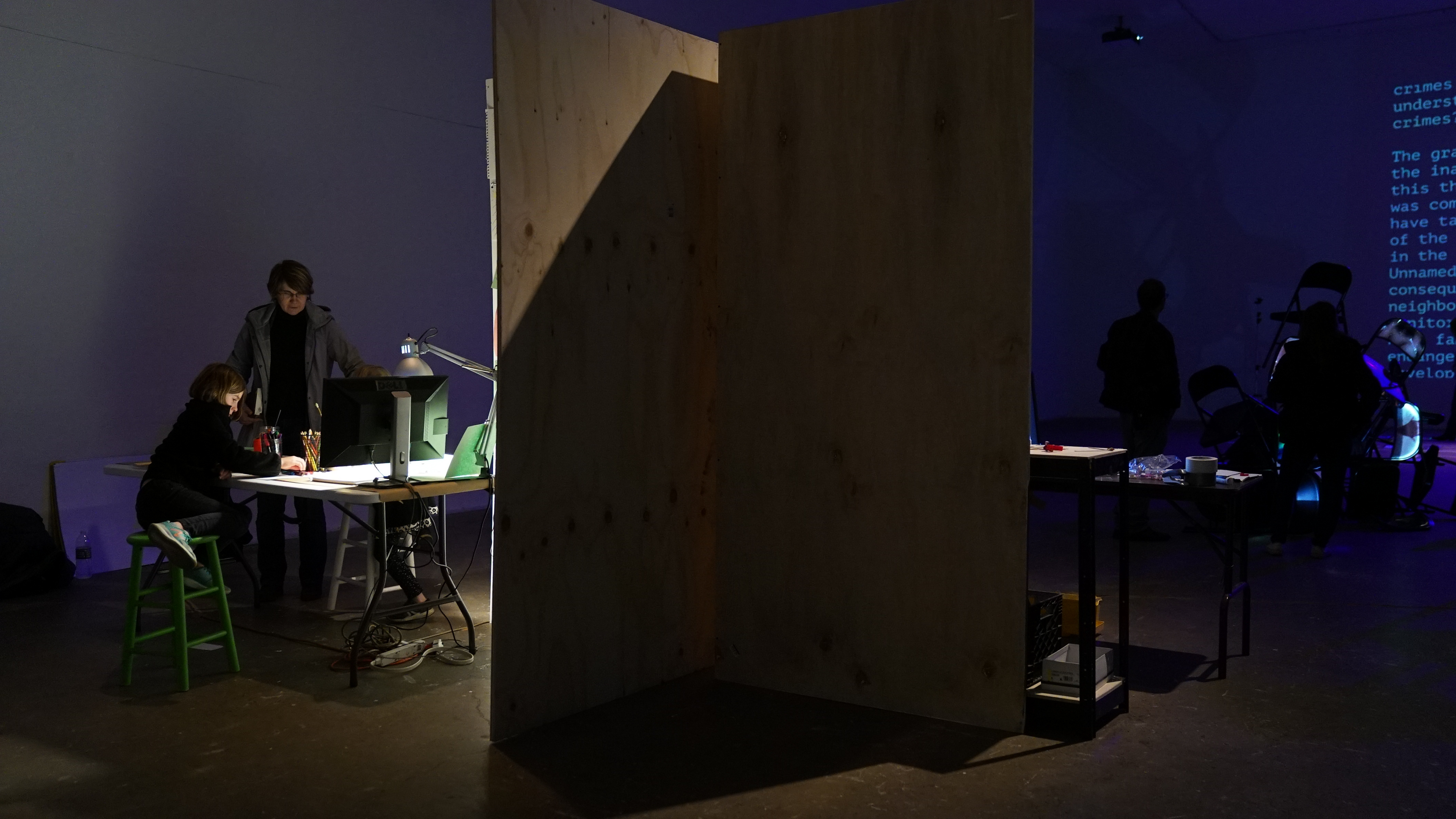
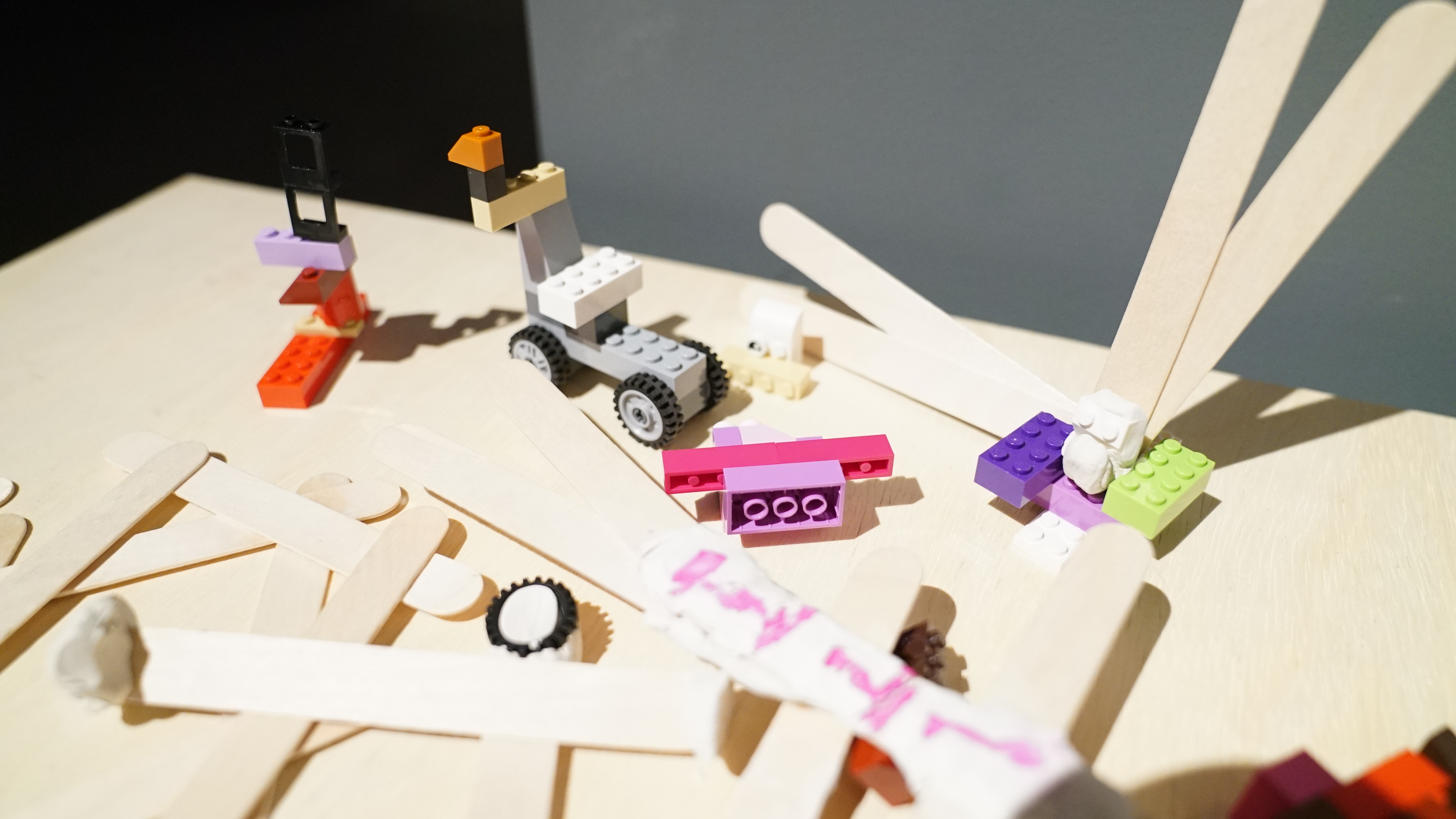


Jonathan Council . Craft as Collaboration
3 room installation explores control. What happens when control is put in the hands of the spectator? What happens when we are the creators and the observers, audience members and performers all at the same time?
Jonathan Council . Close Your Eyes
Two channel visual experience, where what you see leads you down a different path from what you hear. These experiments deal with defiance and the false understanding of control for student's class assignment1
Prudence Anne Amsden. Pas De Deux (1min) . Stop Motion Film
Student response to the question “Can objects dance?” for class assignment1
Materials: Folding Chairs
Music: Claire De Lune by Claude Debussy
Max Angelo Groff, Car Cult. 2018, Video
Closing reception Saturday Dec 9th 5-7pm (Performance at 6pm)
Icebox Project Space 1400 N American St. Philadelphia, PA 19122
For additional information please contact zarfsazmina@gmail.com
Max Groff is an autistic media artist born 1985, Norristown, Pennsylvania. His work explores the problems that exist between cultural humanism and the antihuman technocracy.
By juxtaposing media both old and new, technology both current and obsolete, Max consciously embraces the absurdities of antihumanism. Through a somewhat paranoiac-critical process, he regains his Jungian soul to find that we are all — regardless of our gadgets — human. As a historically-minded media artist, Max embraces and incorporates media from decades and centuries past. Books — often old, forgotten books — serve as starting point for research and conceptual development. Max incorporates images and texts from books even when working in primarily digital formats. His love of books (bibliophilia) stems in part from the fact that he is autistic. The process of arranging books on the shelf is cathartic. For Max, autism is both a gift and a challenge.
These three works are united by the question, “at what point is humanity lost?” Technology is the dominant force reshaping our society as well as our consciousness. And yet, are we conscious of how technology is reshaping us? When cars dominate the street, and the street ceases to be a gathering place for people, humanity is lost. When print media is digitized, and the paper is trashed, humanity is lost. At the point our names no longer correlate to our faces, individuality is destroyed. At the most extreme levels, technology renders us anti-human. And yet, we are forever indebted to technology. The gadget is our new best friend, but we should never cease to question it.
2018, Video
2018, Video
2018, Video and animation
Morgana Sugzdinis is a brazilian graphic artist exploring the colorful aspect of conditional human behavior through interactive play.
Because the way people are conditioned, a natural resistance to discovery has been created. To be able to awaken to new experiences, one must enter a new world letting go of all old perceptions to allow their minds to discover new experiences so something can “emerge” from it. In my work I create a platform that allows people to act upon their natural tendencies.
In this interactive installation I am encouraging the spectators to open their memories and add to the canvas using bold colors, shapes and humor, in order to help creating a work that is conditioned on their thoughts and feelings.
Part 1: Answering the question map
The question map will end at 4 different points, each one a popular metaphor, each metaphor a trait to be interpreted by each person.
Mary Koszycki is a multimedia and digital artist currently living in Philadelphia. Her works’ subject matters explore the interaction between human communication and current technology, and their overall presence in the world.
StEM is a triptych video installation, juxtaposing Scanning Electron Microscopy footage with drone footage of stretching landscapes and vast forests. The piece depicts a narrative of the process of moving nutrients from an unsafe to safe place within the forest- a process that works as an example for many processes present in nature. The piece shows relevance and familiarity between different micro and macro processes including the actions of humans. The viewer is given a sense of connection to the things around them and realizes that everything is linked.
Prudence is currently pursuing her MFA in Choreography at Temple. She is an interdisciplinary artist specifically interested in exploring dance, performance and multimedia art.
Movement is expressive thought. Is that still true when the body is segmented or not physically present. Can objects move and express. What is expressive thought? Our bodies are full of expressive possibilities and I am interested in expanding those possibilities from the physical performance body, using dance improvisation, humor, performance and voice to a digital fragmented body and inanimate objects. I also am interested in the intersection of the physical body and technology and how dancers and performers can expand their creative practice with the intervention of technology and mixed media.
The works that are being presented at “Multi-Pedia” are a result of my experimentation of technology, performance with the physical and digital body. I am mainly using chairs as the inanimate objects to experiment with because I am interested in using everyday objects as materials. Chairs were always around when I first started experimenting with the question “can objects dance” from there they became a the area of focus for both my sculpture, and in my performance; where I explore the possibilities of movement with a rolling chair as well as creating a relationship with my body and the chair.
This performance explores the possibilities of improvisation using voice and movement, as well as expressing my inner world in a way that is accessible even if a bit exaggerated
Film Edited by, Prudence Anne Amsden and Mary Koszycki
Music Edited by, Prudence Anne Amsden
This piece is the final result of looking at the relationship of movement with an intimate object.
Film and Projection by, Prudence Anne Amsden
Materials: Folding Chairs and Zipties
My response to the question “Can objects dance?”
Stop Motion Film by, Prudence Anne Amsden
Music: Claire De Lune by Claude Debussy
Jonathan Council is an artist who strives to push conventions of visual storytelling to reinvent or reimagine the practicality of its various modes, techniques and mediums. He is interested in how people think and behave, and the constant evolution of our abilities to entertain, educate and amaze each other, where his craft is his attempt to explore humanity.
Art has allowed me to explore the nature of what stimulus, provokes and infatuates us as
I want my installation to defamiliarize people’s grasp of the participant and spectator by creating a 3-room art experiment, in which 3 three rooms have a simple prompt of either “draw, write, or build”. The rooms will have varying information that will be influencing everyone’s individual experience. Every experience will be different, and when you leave you will have left something behind.The goal is to collect and display the projects of all 3 rooms at the end of the day. Their art will be influenced simultaneously by each other and by the prompt and objects in their room. Since there will be live feeds, they will not know if they are leading or following. Overall, the installation should showcase the power of neutral influencing, with people’s natural creative tendencies and instincts either leading, or being led into creating original art. It will be an unintentional collaboration between exhibitors, who will both be audience and participants. The collective look of all the artwork displayed will be the art piece itself.
3 room installation explores control. What happens when control is put in the hands of the spectator? What happens when we are the creators and the observers, audience members and performers all at the same time?
Two channel visual experience, where what you see leads you down a different path from what you hear. These experiments deal with defiance and the false understanding of control.
Kayla Watkins is a filmmaker from Baltimore with a focus in media education and documentary cinematography. She has been filming since 2009 covering issues that impact black, brown, poor, and femme people.
Autonomous visual representation is one of the key elements of achieving liberation in a world which revolves around the consumption of media. In my work I am visualizing the feeling of being watched, consumed, and repackaged as a Black femme human for others to evaluate without consideration of our inner motivations by filming the same action repeatedly and screening it simultaneously.
Monitor Report 001 is a video essay styled as an anthropological report from an extraterrestrial sent to Earth to evaluate crimes against humanity from the lens of a galaxy that seeks to exist without war. It is a video triptych shot from several voyeuristic perspectives. This piece documents a Black woman in the seemingly innocuous routine of prepping for the day and leaving.
Christopher Stephens: Age 26 from Cheltenham PA. Graduate of Albright College with a BA in Communications. Chris works as an Associate Producer for Power Home Remodeling Group, and also works for the Philadelphia Eagles as part of the Digital Gameday Staff. Chris is approaching his final semester at Temple in the MediaXarts program at Temple.
In a digital world, one’s own reality becomes distorted when immersing themselves into someone else’s reality.
So many problems in this world come from the lack of understanding of one another’s differences. If people could feel what it’s like to live in the world of an individual who we judge or misunderstand, this world would be better place for all of us. This work should challenge one’s formal way of thinking about things, and introduce them to a reality that they were ignorant to prior. This challenge with trying to shape perception through a digital reality is the ability to truly separate them from the world they know and place them into a reality that feels so real, that the emotions they feel through this experience are unlike anything they could ever imagine in their own world.
VR Animation
